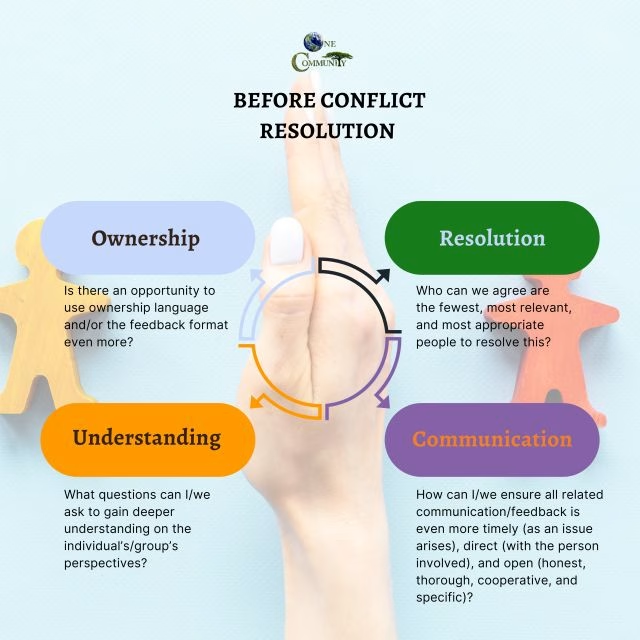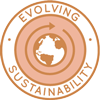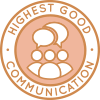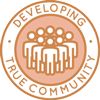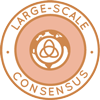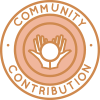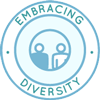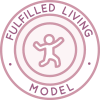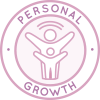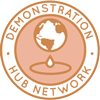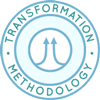
Conflict Resolution Process
This page is about a conflict resolution process that is purposed for use in any situation. It is born from core values of Love and Connection, Communication, Personal Growth, True Community, and Empowerment, plus specific training in consensus, negotiation skills, listening skills, and a desire for the most loving and mutually beneficial resolution possible.
This page includes the following sections:
CLICK THESE ICONS TO JOIN US THROUGH SOCIAL MEDIA
WAYS TO PARTICIPATE WITH ONE COMMUNITY
SUGGESTIONS | CONSULTING | MEMBERSHIP | OTHER OPTIONS
BEFORE CONFLICT RESOLUTION

The best approach to conflict resolution is to maintain a positive and proactive environment that minimizes or eliminates conflict. Elements we’ve found essential to creating this include timely, direct, and open communication and feedback using ownership language and asking questions to gain deeper understanding on an individual’s perspectives when differences arise.
More specifically, in decision making with One Community, this means asking ourselves and others the following four key questions:
We also use monthly two-directional feedback and sharing sessions between all members of our group. We’ve found that the questions above combined with the two-directional feedback sessions address most concerns and areas needing discussion before they get to the stage of needing formal conflict resolution. They also help to assure that conflict is handled between the specific people involved rather than the larger group.
WHEN CONFLICT RESOLUTION IS NEEDED
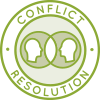 Conflict resolution is “needed” anytime someone feels it would be helpful. The formal process is designed to increase understanding, provide an environment where feelings can be fully shared, and to restore harmony to any situation where one or more people feels it is lacking. Because of this, we recommend the term “conflict” be loosely interpreted so the steps of “resolution” can be more broadly applied. With this in mind, initiating the conflict resolution process is encouraged and looked upon as a proactive approach to maintaining positive relationships.
Conflict resolution is “needed” anytime someone feels it would be helpful. The formal process is designed to increase understanding, provide an environment where feelings can be fully shared, and to restore harmony to any situation where one or more people feels it is lacking. Because of this, we recommend the term “conflict” be loosely interpreted so the steps of “resolution” can be more broadly applied. With this in mind, initiating the conflict resolution process is encouraged and looked upon as a proactive approach to maintaining positive relationships.
In short, if you think going through the conflict resolution process could be helpful, it probably will be and you should request it.
CONFLICT RESOLUTION STEPS
< Before starting any conflict resolution process, it is helpful to understand a few foundations of maintaining positive relationship dynamics. One of the most important of these is a collaborative commitment to empowering each other to seek resolution sooner rather than later, and always with the specific party involved; avoiding gossiping and the rallying of others to one side or the other of a conflict or cause.
Before starting any conflict resolution process, it is helpful to understand a few foundations of maintaining positive relationship dynamics. One of the most important of these is a collaborative commitment to empowering each other to seek resolution sooner rather than later, and always with the specific party involved; avoiding gossiping and the rallying of others to one side or the other of a conflict or cause.
It is also helpful to understand the value of using “I” versus “you” statements to emphasize our own feelings and experience, rather than perceptions of other people’s. Asking questions about motive and intent, rather than making statements or assumptions, is another key to productive conversation. It is also helpful to remember that from an individual’s perspective they are always 100% correct, so it is much more compassionate to use questions as a method of gaining deeper understanding rather than questioning someone’s individual views.
Lastly, if ever it feels necessary, seek the help of a 3rd-party guide for the steps below. In especially charged situations, a mutually agreed upon and neutral facilitator can be extremely helpful.
Here are the steps of the conflict resolution process:
- Someone (we’ll call them Person A) states they feel there is conflict that needs resolution
- The other person(s) (we’ll call them Person B) agrees to listen and hear Person A’s feelings
- Person A states their position and how it has affected them; Person B listens attentively and respectfully without interruption
- Person B in turn repeats or describes as best as they can Person A’s position to Person A’s satisfaction; if Person A is not satisfied that Person B has heard and understood them, they clarify and have Person B again describe what they are hearing
- If necessary Person B then states their position and how it has affected them while Person A listens, repeating and describing Person B’s position to Person B’s satisfaction; again if Person B is not satisfied that Person A has heard and understood them, they clarify and have Person A again describe what they are hearing
- Both parties pause to try and see the issue from the other’s point of view
- Person A and Person B then suggest higher level related values they believe they both agree on and, identifying one or two, brainstorm creative solutions from that point of balance and agreement
- Person A and Person B volunteer what each can do to resolve the conflict or solve the problem
- A formal agreement is drawn up with agreed-upon actions for both parties and an identified procedure should disagreement arise again
SUMMARY
 One Community considers this process helpful in virtually any situation. Still, this process is just one small piece of One Community’s commitment to cohesive living, empathy, understanding, and walking softly and mindfully in the world and with each other, and living and creating for The Highest Good of All. For a better understanding of our community philosophies, see the One Community Pledge Page and the pages discussing who we are, what we’re creating, genuine community, and community maintenance.
One Community considers this process helpful in virtually any situation. Still, this process is just one small piece of One Community’s commitment to cohesive living, empathy, understanding, and walking softly and mindfully in the world and with each other, and living and creating for The Highest Good of All. For a better understanding of our community philosophies, see the One Community Pledge Page and the pages discussing who we are, what we’re creating, genuine community, and community maintenance.
FREQUENTLY ANSWERED QUESTIONS
Q: Where can I learn more about your other values and how you use each of them in your organization?
Click the icons below to be taken to a complete page for each value:
Q: Where can I get more information about your philosophies for world change?
Please take a look at each of these additional pages: (click icons)
Q: How long should this process take?
This will depend on the intensity and complexity of the conflict/disagreement. Because of this, the process should be entered into with both parties committed and available to go through the process for as long as is needed. This could be as short as 15-20 minutes, in the case of a simple misunderstanding, or as long as several hours if there are multiple and/or very emotionally charged issues to discuss.
Q: How do we know when the process is complete?
You know the process is complete when an agreement is reached that all participants are happy with and feel is a solution. One technique that is helpful to assure everyone is “complete” is to take 1-5 minutes of silent reflection at the end of the process. During this time, everyone involved checks in silently with themselves to make sure there isn’t anything else they feel needs to be said or accomplished. If anything comes up, it is spoken and addressed if needed. The silent checking-in process then begins again. This is continued at the end of every process unit everyone sits silently for the specified time and can say with confidence “I am complete.”
Q: What do you mean by “higher level values they agree on?”
Examples of this would be indisputable values both people share. These could be values like honesty, integrity, peace, love, kindness, joy, etc. At the point these values are identified, participants are then asked to brainstorm creative solutions from the perspective of the shared value or values. In the most literal sense, the question could actually be asked, “What would (honesty, integrity, peace, love, etc.) do in this situation?”
Q: What if we get to the end of the process and one person still feels that resolution has not been achieved?
The process should be started over with the unresolved area of conflict as the focus.
Q: What if an agreement is achieved but someone does not live up to their end of the agreement?
The process should be completed again with the previous mutually agreed upon agreement as the focus and coming to a new agreement that everyone can successfully implement as the goal.
HAVE A QUESTION YOU’D LIKE ADDED HERE?
EMAIL IT TO US
 One Community
One Community